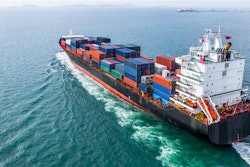
Most consumers are now acutely aware of random shortages of products on store shelves, increased fuel prices, and long delays for cherished items. From the manufacturing perspective, the shortages of parts and raw materials due to the supply chain crisis leads to a serious problem of downtime in manufacturing plants. When production lines shut down, manufacturers lose efficiency and money. If these problems persist, the cost increases eventually reach consumers.
The general consensus seems to be that corrective measures to solve the crisis in global shipping will take a long time to fully take effect. In the meantime, the supply chain tie-ups cause headaches not just because of production hiccups, but also because of concerns about product damage. During shipping, goods are subject to unpredictable climate changes and humidity levels, causing potential moisture and oxygen degradation such as spoilage and rusting. These problems are exacerbated when products sit languishing in containers out at sea, or when they are stuck in ports and warehouses for months on end.
To minimize these risks, suppliers should look for a protective packaging technology that can eliminate oxidation and moisture damage to sensitive products. This type of technology has been used in Japan for years, but it was only recently introduced to the North American market. By storing individual parts in a gas barrier bag built to combat exposure to the elements, the system maintains product quality. Each bag features a customized agent composed of oxygen and moisture absorbing compounds, in addition to being hermetically sealed to prevent moisture penetration. An oxygen indicator can also be added to provide an instant read-out of oxygen levels.
A “revolutionary” way to protect product
Research has shown a system offering both oxygen and moisture absorption can protect products for an exceptionally long period of time, even up to 10 years in some cases. These features make it a viable option for suppliers seeking to safely secure their products during long supply chain delays, no matter the individual characteristics and risks to the particular product. For example, a paper-based product requires a “moisture neutral” sealed environment with only moderate moisture protection. By contrast, metal products such as sensitive electronic parts require more aggressive moisture scavenger agents. Knowing the needs of a product and tailoring an absorption system to suit those demands will ensure the target item is protected. With this in mind, product manufacturers should closely collaborate with suppliers of oxygen and moisture absorbers to customize their packaging technology accordingly.
 Mitsubishi Gas Chemical's RP System is a unique packaging technology that enables manufacturers to protect sensitive products from oxygen and moisture damage.Mitsubishi
Mitsubishi Gas Chemical's RP System is a unique packaging technology that enables manufacturers to protect sensitive products from oxygen and moisture damage.Mitsubishi
Shifting from “just-in-time” to more flexible manufacturing
A total system that protects against both oxygen and moisture degradation not only helps companies facing today’s supply chain challenges, but it also offers the ability to shift some manufacturing routines by enabling greater flexibility. In so doing, it can help to improve a company’s sustainability goals.
Most people started hearing about supply chain challenges months ago when numerous industries were confronting a shortage of semiconductors, a problem that will likely persist for many months to come. This is a major contrast to 20 years ago, when the electronics industry had to write off $13 billion due to an oversupply of semiconductors, which led to a shift to lean manufacturing, just-in-time and build-to-order production to deliver electronic components only as needed. This strategy worked well when the global supply chain functioned properly, but two decades later it has backfired. In 2021 the shortage of semiconductors became so severe that the automotive industry is now projected to lose $100 billion in sales, according to a report from EPS News.
The lesson? Extra stock can be kept in nondegradable, usable conditions if the right preservation system is employed. Adopting a packaging system that can eliminate oxidation and moisture damage offers not only a protective solution for the immediate problems of delayed supply chains, but also enables suppliers to manufacture products more efficiently and flexibly. Because a product packaged with this combined technology can be protected for years, suppliers and OEM’s can run larger production volumes and serve higher demands quickly. This is an important advantage over running only smaller batches which are the hallmark of so-called lean “just-in-time” manufacturing but create extreme limitations in times of unpredictable need. Manufacturers would have the option to produce in bulk and keep spare parts in storage. When it comes to electronic components, inaccurate forecasting has long been a problem in manufacturing, well before the current supply chain crisis. Having this extended shelf-life would eliminate those issues and keep products in pristine condition for later use.
This flexibility also gives manufacturers a potential “green” option by enabling fewer, larger runs which can improve efficiency. This is due in part to the fact that short runs are often more energy intensive because equipment needs to be started up more frequently. Shipping larger quantities of items in volume, with the flexibility of storing parts knowing they will be protected, can also reduce overall distribution numbers, therefore helping to reduce carbon emissions.
Click here to hear more about sustainability in the supply chain:
Perhaps the most problematic aspect of the current supply chain crisis is the element of unpredictability it has wrought for consumers and manufacturers alike. Manufacturers seeking greater control and reassurance for their operation should consider using a unique absorptive packaging technology that can provide confidence in product protection, can help mitigate the inventory issues and relieve stress for suppliers. With the right partner and an effective absorption system, producers can achieve more flexible and efficient production methods that ease the burden on unpredictable parts forecasting as well as improve sustainability scores. Most importantly, they can find certainty in a period of unknowns – a result that is invaluable for any manufacturer.















